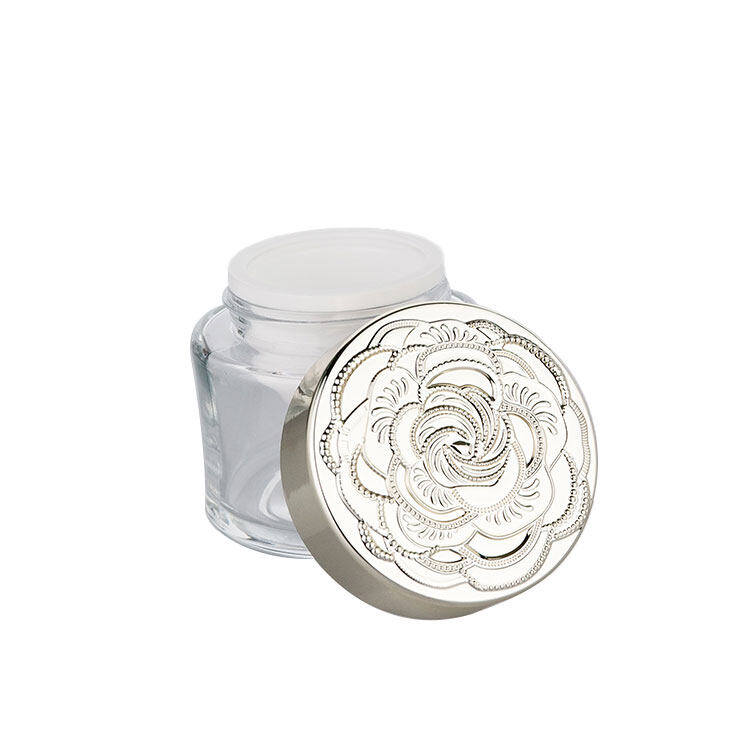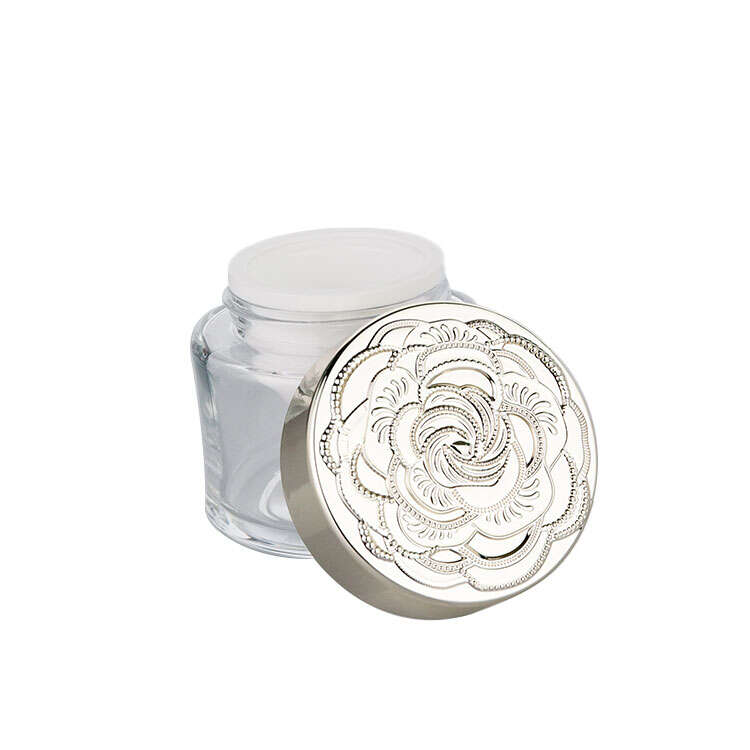Email format error
Email cannot be empty
Email already exists
6-20 characters(letters plus numbers only)
The password is inconsistent
Email format error
Email cannot be empty
Email does not exist
6-20 characters(letters plus numbers only)
The password is inconsistent

In the competitive landscape of skincare, cosmetics, and food packaging, the choice of container can significantly impact a product's success. Among various packaging options, glass jars have emerged as a popular choice for both manufacturers and consumers. This article provides an in-depth overview of wholesale cream glass jars, detailing their types, material properties, supplier selection, manufacturing processes, quality assurance, and innovations in design. By understanding these elements, brands can make informed decisions that enhance their products' appeal and effectiveness.
Cream glass jars come in a variety of shapes, each serving different aesthetic and functional purposes:
Round Glass Jars: Round jars are the most common type of cream glass jar. Their shape allows for uniform filling and easy handling. They are widely used in skincare products, such as moisturizers and serums, where a smooth and streamlined design is preferred.
Square Glass Jars: Square jars offer a modern and stylish alternative to round jars. They maximize shelf space and provide a unique aesthetic that can set a product apart in a crowded market. Square jars are often utilized for high-end creams and specialty food products, such as gourmet sauces or jams.
Frosted Glass Jars: Frosted glass jars provide a more luxurious appearance and can enhance the perception of a product's quality. The frosted finish can diffuse light, protecting sensitive formulations from UV exposure. These jars are commonly used for premium skincare lines and artisanal products.
The size of cream glass jars can vary widely, catering to different consumer needs and product formulations:
Small Glass Jars: Typically ranging from 30ml to 50ml, small jars are ideal for samples, travel-sized products, or concentrated formulations. Brands often use small jars to encourage customers to try new products without a significant commitment.
Medium Glass Jars: Medium-sized jars, such as 100ml or 150ml, are suitable for daily use products, including standard skincare creams and body butters. This size balances convenience and value, appealing to a broad audience.
Large Glass Jars: Large jars, which can hold 200ml or more, are often used for bulk products, such as family-sized moisturizers or food items like sauces and spreads. These jars are perfect for brands targeting consumers who value quantity and cost-effectiveness.
Glass jars are versatile and can be used across various industries:
Skincare Products: Cream glass jars are primarily associated with skincare, housing products like moisturizers, serums, and eye creams. The non-reactive nature of glass preserves the efficacy of active ingredients.
Food Products: Many brands utilize cream glass jars for food items, such as jams, sauces, and dressings. Glass jars prevent flavor contamination and are an appealing option for gourmet products.
Other Applications: Beyond skincare and food, glass jars are also used for candles, home decor, and DIY projects, highlighting their versatility in packaging solutions.
One of the primary reasons glass is favored for packaging creams is its non-reactive nature. Unlike plastic, glass does not leach harmful chemicals into its contents, ensuring that the product's integrity is maintained. This property is particularly important for skincare formulations, which may contain sensitive ingredients that can degrade or alter in the presence of certain materials.
Glass jars provide an airtight seal that protects contents from moisture, air, and contaminants. This is crucial for extending the shelf life of creams and ensuring that active ingredients remain effective. Additionally, glass is an excellent barrier against external elements, preserving the quality of the product over time.
The aesthetic appeal of glass cannot be overlooked. Its transparent nature allows consumers to see the product inside, enhancing trust and interest. The weight and clarity of glass often convey a sense of luxury and quality, making it a preferred choice for premium brands. The ability to customize glass jars with various designs, colors, and finishes further enhances their visual appeal.
Screw-top glass jars are widely used in both skincare and food applications due to their convenience and effectiveness in sealing contents.
Advantages and Disadvantages: Screw-top jars provide a secure closure that prevents spills and contamination. However, they may not be as user-friendly for consumers with limited dexterity, as the twisting motion can be challenging for some.
Common Applications: These jars are ideal for thicker creams and food products that require a tight seal to maintain freshness, such as body butters and homemade sauces.
Pump dispenser jars have gained popularity in the cosmetics industry due to their practicality.
Benefits of Using Pump Dispensers: They allow for controlled dispensing, reducing waste and preventing contamination. This feature is especially beneficial for liquid and semi-liquid products, such as lotions and serums.
Ideal Uses in Skincare and Cosmetics: Brands often use pump dispensers for products that require precise application, making them a staple in skincare routines.
Airless Jars: Airless jars use a unique pumping mechanism that prevents air from entering the container, minimizing oxidation and extending shelf life. These jars are particularly valuable for sensitive products, such as anti-aging creams.
Reusable Components: Some modern designs incorporate reusable elements, encouraging sustainability. For example, brands may offer refillable jars, allowing consumers to reuse their packaging, reducing waste.
Selecting the right supplier is crucial for ensuring product quality and reliability.
Assessing Supplier Capacity and Technology: Brands should evaluate suppliers based on their production capacity to ensure they can meet demand. Advanced technology in glass manufacturing can lead to higher quality products.
Importance of Scalability in Production: A supplier's ability to scale production as demand increases is essential for maintaining consistent supply.
Key Certifications to Look For (ISO, FDA): Reputable suppliers often hold certifications that demonstrate their commitment to quality. ISO certification indicates adherence to international standards, while FDA approval is crucial for food and cosmetic packaging.
Quality Assurance Processes in Place: Understanding a supplier's quality control processes helps brands ensure that they receive products that meet their specifications.
Evaluating Responsiveness and Support: A supplier’s ability to communicate effectively and address concerns is vital for building a successful partnership. Prompt responses to inquiries can indicate a supplier's dedication to customer satisfaction.
Importance of Communication in Supplier Relationships: Ongoing communication is essential for addressing potential issues and ensuring smooth operations throughout the supply chain.
Before committing to a supplier, evaluating samples and negotiating prices is crucial.
Checking for Defects and Quality: Brands should carefully inspect samples for any defects, such as chips or cracks, and assess the overall quality of the glass.
Understanding Weight and Feel: The weight and feel of a glass jar can influence consumer perception. Heavier jars often convey a sense of quality, while lighter jars may feel less substantial.
Tips for Effective Negotiation: Brands should research market prices and have a clear understanding of their budget before entering negotiations. Discussing long-term contracts may also help secure better pricing.
Considering Long-Term Contracts vs. One-Time Purchases: Committing to long-term agreements can provide stability and predictability in pricing, benefiting both the brand and supplier.
China has established itself as a global leader in glass jar manufacturing, thanks to its advanced production capabilities and competitive pricing. Understanding the manufacturing process can help brands make informed sourcing decisions.
Types of Glass Used (e.g., Soda-Lime, Borosilicate): The most common type of glass used for jars is soda-lime glass, known for its excellent workability and cost-effectiveness. Borosilicate glass, on the other hand, offers greater thermal resistance and durability, making it suitable for specialized applications.
Importance of Quality Raw Materials: The quality of raw materials directly impacts the final product. High-quality glass ensures better clarity, strength, and resistance to breakage.
Forming Process: The manufacturing process begins with melting raw materials at high temperatures. The molten glass is then shaped into jars using various forming techniques, such as blow molding or press molding.
Annealing and Cooling: After forming, jars are gradually cooled in an annealing lehr to relieve internal stresses. This step is crucial for ensuring the durability and integrity of the glass.
Decorating and Finishing Processes: Once cooled, jars may undergo decorating processes, such as printing or frosting, to enhance their aesthetic appeal. Finishing touches may include polishing edges and applying protective coatings.
Assessing the Durability and Safety of Glass Jars: Manufacturers perform various tests to ensure that jars meet safety and quality standards. This includes assessing durability against impact and pressure.
Importance of Rigorous Testing Standards: Stringent testing standards help prevent defects and ensure that the jars are suitable for their intended use, whether in cosmetics or food packaging.
Quality assurance is a critical component of glass jar production, ensuring that products meet industry standards and consumer expectations.
Defects in Glass (e.g., Bubbles, Cracks): Common defects can include bubbles, which form during the melting process, and cracks, which may occur during cooling or handling.
Inconsistent Sizes and Shapes: Variability in jar sizes and shapes can lead to packaging issues and may affect the overall presentation of the product.
Best Practices in Manufacturing: Implementing best practices, such as regular equipment maintenance and staff training, can help reduce defects in production.
Importance of Feedback Loops in Production: Establishing feedback loops allows manufacturers to quickly identify and address quality issues, leading to continuous improvement in production processes.
Techniques for Strength Testing: Various methods, such as drop tests and compression tests, can assess the strength and durability of glass jars.
Clarity and Safety Assessments: Regular clarity assessments ensure that jars maintain a high level of transparency, which is essential for consumer appeal. Safety assessments also evaluate potential risks associated with the glass materials used.
The packaging industry is continuously evolving, and glass jar design is no exception. Innovations in design can enhance functionality, aesthetics, and sustainability.
Child-Proof Lids: To enhance safety, many brands are adopting child-proof lids for their glass jars, particularly in the cosmetics and food industries. This design feature protects sensitive products from accidental access.
Airless Technology for Extended Shelf Life: Airless jars are gaining traction in the market as they prevent air exposure, thereby extending the shelf life of sensitive formulations. This technology is particularly beneficial for high-end skincare products.
Reusable Components to Promote Sustainability: Many brands are exploring reusable components in glass jar designs, such as refillable jars. This innovation encourages consumers to reduce waste and engage in sustainable practices.
Enhancing Consumer Experience: Innovative designs can significantly enhance the consumer experience by making products easier to use and more appealing visually.
Branding Advantages for Businesses: Unique and functional packaging can set a brand apart from competitors, attracting consumers and fostering brand loyalty.
Sustainability and Eco-Friendliness: The push for sustainability is reshaping the packaging industry. Brands are increasingly seeking eco-friendly materials and processes, including the use of recycled glass.
Customization and Personalization Options: Personalized packaging is becoming more popular, allowing brands to connect with consumers on a deeper level. Custom designs can enhance the overall product experience and drive consumer engagement.
In conclusion, the world of wholesale cream glass jars is vast and filled with opportunities for brands in various industries. Understanding the different types, material properties, manufacturing processes, quality assurance practices, and innovations in design is essential for making informed decisions. By choosing the right packaging, businesses can enhance their product appeal, ensure quality, and meet consumer demands in an ever-evolving market.
Whether you are a skincare brand looking to elevate your packaging or a food manufacturer seeking reliable containers, cream glass jars provide an elegant and effective solution. As the industry continues to innovate and adapt to changing consumer preferences, staying informed about trends and best practices will be key to success in the competitive landscape of glass jar packaging.